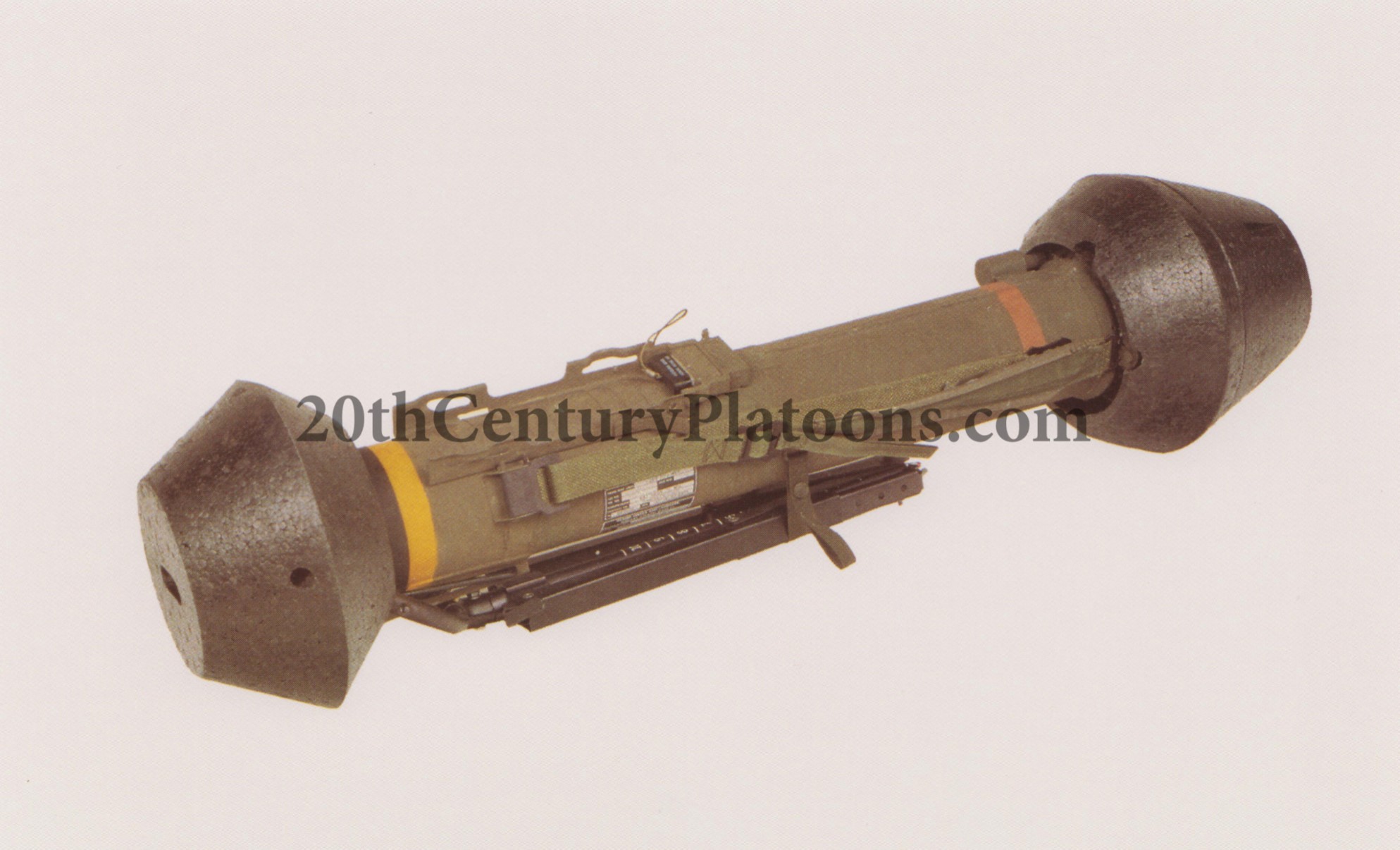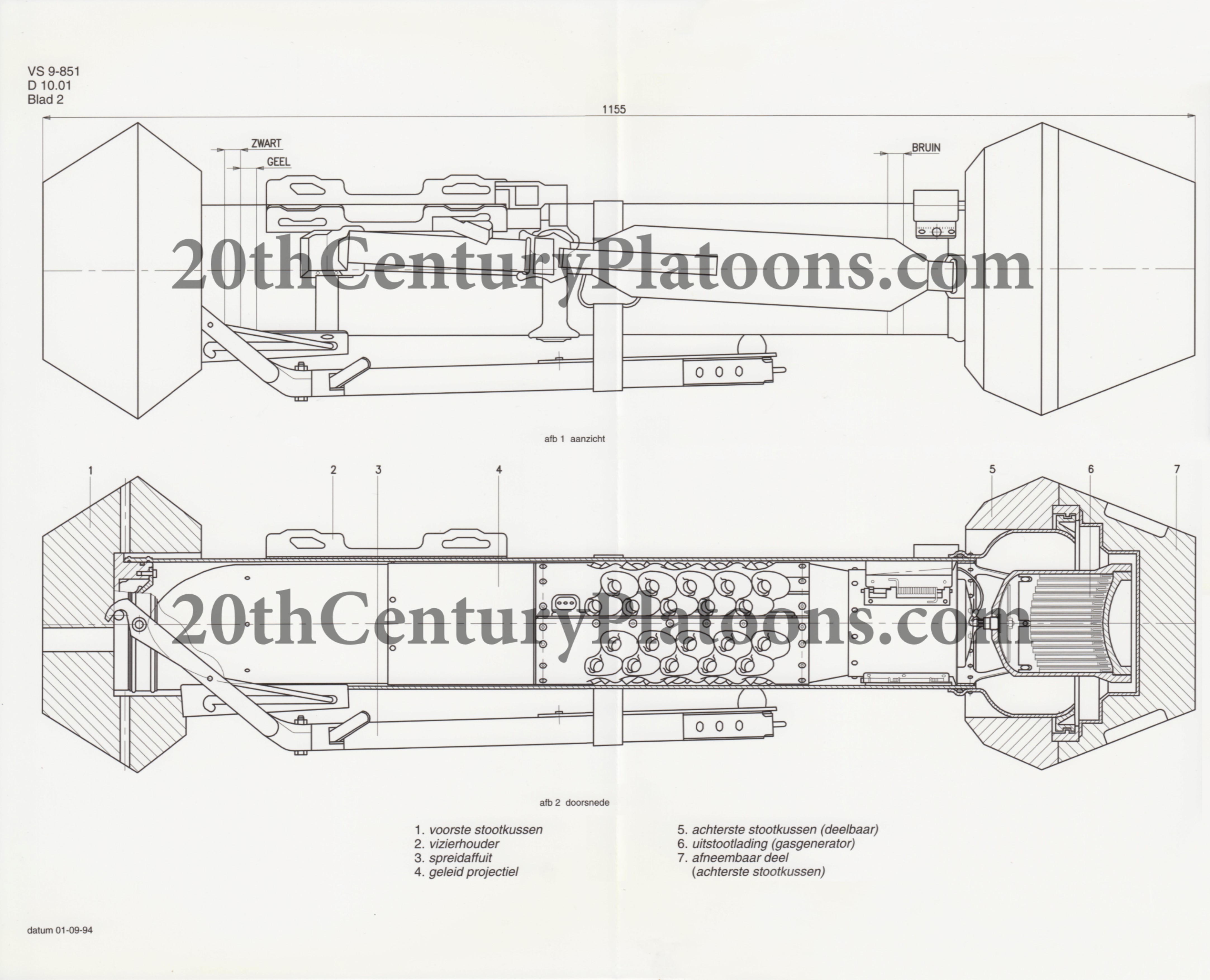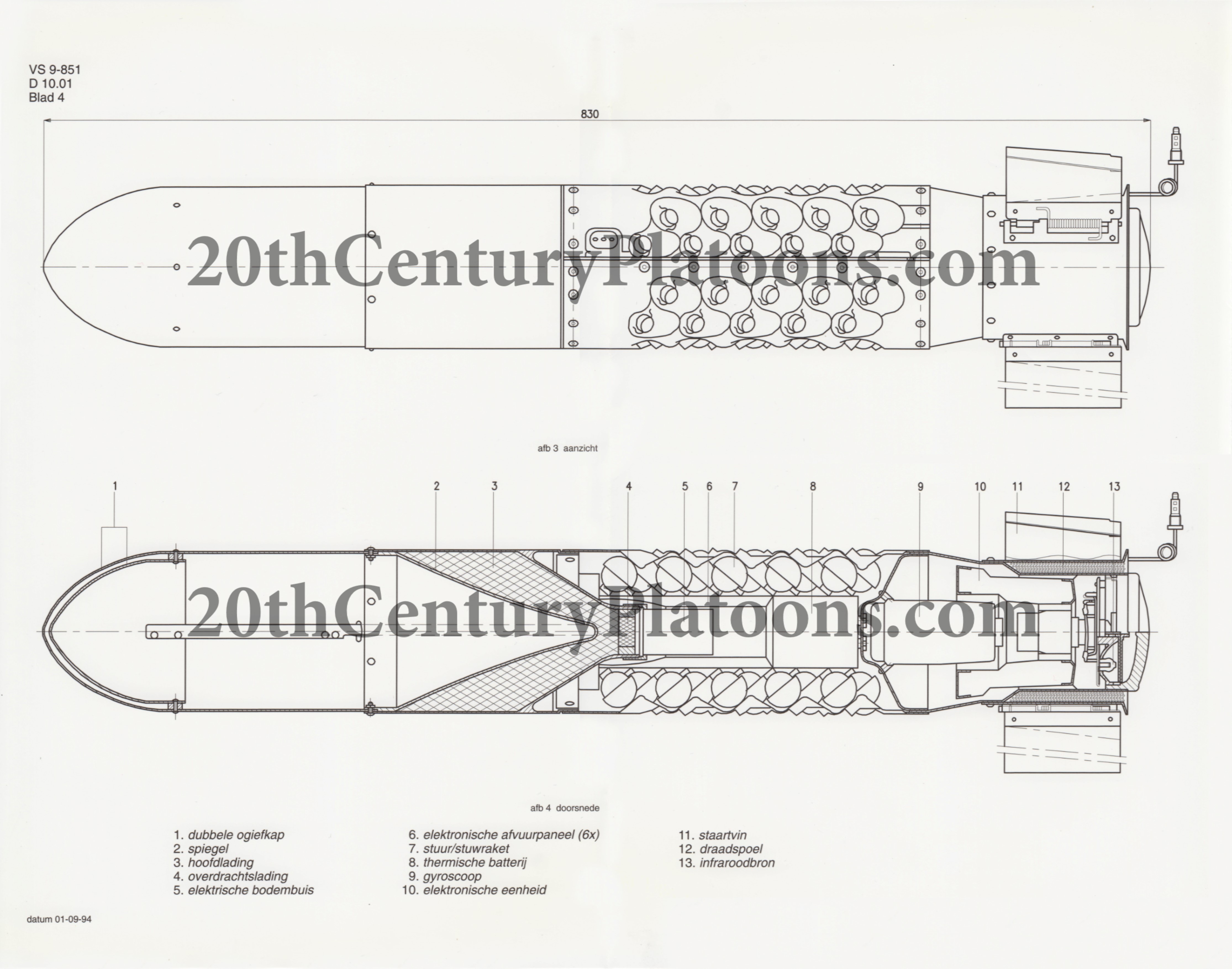A Dutch assessment of the M47 DRAGON and MILAN

×
![]()
How do we stop the ever-improving fleet of Soviet and Warsaw Pact tanks? Such a question was on the mind of Dutch military planners, especially with regards to finding the right mix of anti-tank weapons.
The following is a discussion of the M47 Dragon and MILAN anti-tank weapons, as found in archival documents dated October of 1977.
Although the Dragon is often derided in American literature on the topic,
the following document provides a more nuanced view and gives insight into the specific characteristics of both the M47 Dragon and MILAN, with the M47 Dragon eventually winning out.
Situation report
Medium Range Anti-tank Weapon System
1. Introduction
The Soviet Union has expanded her tank force by approximately 40% during the past decades. The units of the Warsaw Pact receive approximately 2000 new T-72 tanks every year, which boast high quality armour.
Engaging enemy tanks in combat will in case of an eventual conflict – as far as 1 (NL) Corps is concerned – occur by means of specific anti-tank weapon systems, potentially in combination with artificial obstacles such as amongst other, mine fields.
2. Anti-Tank PhilosophyEngaging enemy tanks in combat will in case of an eventual conflict – as far as 1 (NL) Corps is concerned – occur by means of specific anti-tank weapon systems, potentially in combination with artificial obstacles such as amongst other, mine fields.
It is assumed within 1 (NL) Corps that anti-tank combat must commence at the greatest possible range, but must be continued at shorter ranges. After all, as range decreases, more tanks will expose themselves more often and for longer periods of time, among other reasons as there will be less cover.
In such a case, more anti-tank weapons will have to be deployed as the situation demands: this is called “intensification”.
This anti-tank philosophy demands – with respect to tactical necessity, technical characteristics and the cost factor – a so-called “mix” of anti-tank weapon systems possessing short, medium, and long range. A number of characteristics of these systems are noted in the table below.
| Characteristics of the AT-weapon “mix” | Type AT-system | Scale of issue | Weight | Note | Short range (up to 300m) | Squad | Light weight max. ca. 5 kg | Cheap | Medium range (60-1000 to 2000m) | Platoon | Ground mount max. 20 to 30 kg | Relatively cheap | Long range (up to 3000m) | Battalion | Vehicle-mounted 40 kg or more | Not cheap |
At present 1 (NL) Corps possesses the following anti-tank weapon systems:
- Close-in protection: LAW, M72 A1 (American weapon system, range approx. 150m);
- Short range: Recoilless rifle 84mm, Carl Gustav (Swedish weapon system, range approx. 350m);
- Medium range: No weapon system present;
- Long range : TOW (American weapon system, range 3000m).
- Close-in protection: LAW, M72 A1 (American weapon system, range approx. 150m);
- Short range: Recoilless rifle 84mm, Carl Gustav (Swedish weapon system, range approx. 350m);
- Medium range: No weapon system present;
- Long range : TOW (American weapon system, range 3000m).

3. Requirement
A medium range anti-tank weapon system is currently missing in the anti-tank “mix”.
To create a balanced “mix” of anti-tank weapon, the following are required as soon as possible:
350 medium range anti-tank weapon systems with accompanying ammunition, to equip the armoured infantry battalions of 1 (NL) Corps.
As such, two weapon systems qualify:
(1) The American M47 Dragon
- Developed in 1966-1971 by the Mc Donnel Douglas company, Titusville
- Produced by Raytheon, Bristol (USA)
- Supplier: US-Army DARCOM
- Effective range (moving target): 160m – 1045m
- System weight: 14.5 kg (ready-to-fire)
- Round weight: 11.5 kg
- Length: 115.4 cm
- Height: 58-92 cm
(2) The Franco-German MILAN
- Developed in 1963-1972 and produced by Messerschmitt-Bölkow-Blohm, Munich, and the Société Nationale Aerospatiale (SNIAS), Paris
- Supplies: Sales agency Euromissile (Paris)
- Effective range (moving target): 500m – 1900m
- System weight: 28 kg (ready-to-fire)
- Round weight: 12 kg
- Length: 126 cm
- Height: 65 cm
It is not expected that, within a reasonably short timeframe, other systems will be developed that can satisfy the requirements as stated.
(1) The American M47 Dragon
- Developed in 1966-1971 by the Mc Donnel Douglas company, Titusville
- Produced by Raytheon, Bristol (USA)
- Supplier: US-Army DARCOM
- Effective range (moving target): 160m – 1045m
- System weight: 14.5 kg (ready-to-fire)
- Round weight: 11.5 kg
- Length: 115.4 cm
- Height: 58-92 cm
(2) The Franco-German MILAN
- Developed in 1963-1972 and produced by Messerschmitt-Bölkow-Blohm, Munich, and the Société Nationale Aerospatiale (SNIAS), Paris
- Supplies: Sales agency Euromissile (Paris)
- Effective range (moving target): 500m – 1900m
- System weight: 28 kg (ready-to-fire)
- Round weight: 12 kg
- Length: 126 cm
- Height: 65 cm
It is not expected that, within a reasonably short timeframe, other systems will be developed that can satisfy the requirements as stated.

4. Evaluation
a. General
An evaluation of the advantages and disadvantages of both systems has taken place with regards to: tactical factors, technical factors, logistical factors, and financial/commercial factors.
The most important considerations are mentioned below.
b. Tactical factors
The DRAGON satisfies the tactical requirements concerning effective range; the MILAN has a somewhat greater range, but is only effective at ranges above 500m as a result of its guidance system.
As operational considerations dictate that tanks can be engaged at ranges below 500m in approximately 40 percent of situations, a strong operational preference is given to the DRAGON, which can provide an important contribution to the “intensification” anti-tank fire.
c. Technical factors
As the gunner is to maintain a line of sight with target using his sight, it is important the system’s firing signature (dust, smoke, flash) is minimal. The [enemies’] possibility of recognizing the firing position and engaging the gunner during the time of flight, is minimal as such.
As such, it is also important the firing position can not be deduced from the rocket’s smoke trail; furthermore such a smoke trail limits the gunner’s vision.
The MILAN’s firing signature is greater than that of the DRAGON, which is mostly to be blamed on the type of powder used by the gas generator, which launches the rocket.
As a result of differences in propulsion between the two weapon systems (the MILAN employs continuous propulsion, the DRAGON a discontinuous propulsion using a maximum of 27 bursts from the rocket’s sides) there is also a clear difference in smoke trail between the two systems, to the MILAN’s disadvantage.
Gunnery training requires, as a result of the DRAGON’s bipod mount, a greater number of practice rounds than the tripod-mounted MILAN. The training period for the MILAN is therefore somewhat shorter.
Night sights for the MILAN are still in development and are expected mid-1982. At the moment, night sights for the DRAGON can be supplied.
d. Logistical factorsPreventative maintenance for both systems shows a large number of differences between the two.
Whilst the aiming/tracking device for the Dragon is to be tested every 90 days, the MILAN is to be tested every 14 days.
This is mostly the result of the need to align the sight (optics), tracking device (infra-red), and launch tube with one another.
The DRAGON requires only the optics and infra-red tracker to be aligned; due to the weapon’s mechanism, they are always in line with the launch tube and therefore less vulnerable to tuning.
As a result of the high cost of MILAN testing equipment, part of basic maintenance must be outsourced.
The option of commonly maintaining equipment through the NATO Maintenance and Supply Agency has been investigated.
The high rate charged by the MILAN’s producer currently stand in the way of this option.
For the DRAGON, all maintenance can be performed with the Netherlands Armed Forces and at a limited costs.
e. Financial/commercial factorsThe purchase of the DRAGON system involves approx. ƒ 78 million; acquiring the necessary MILAN systems requires ƒ 190 million.
Yearly recurring costs for each of the systems in terms of required practice rounds, spare parts, etc. are ƒ 11 million for the DRAGON and ƒ 14 million for the MILAN.
The actual adoption of the DRAGON system will take approximately three years after placing the order, whilst the MILAN will take approximately four years.
Principally, both systems allow for offsets.
Negotiations have been taking place by the Ministry of Economic Affairs.

5. Standardisation
The Franco-German MILAN is in use with – apart from West-Germany and France – Belgium, Great-Britain (which will produce the MILAN under license), and Greece. Adoption is being considered in Turkey. Adoption of the MILAN would therefore contribute to standardisation as far as a choice of weapon system within the European NATO-countries. No logistical advantages are to be gained, however.
The DRAGON system has been adopted by the United States Armed Forces. The system has furthermore been bought by Israel, Jordan, Iran, and Switzerland. Sweden and Italy are considering adoption.
In case of adoption, the Royal Netherlands Army can make use of basic supplies used by the United States Army.
6. Decision
As a result of technical and tactical evaluations, preference is given to the DRAGON anti-tank weapon system.
From the logistical point of view, the DRAGON is preferred as it allows for all maintenance to be performed within the own supply structure.
A strong preference for the DRAGON is derived from the fact that the operational requirements of 350 anti-tank weapon systems will cost ƒ 78 million, as opposed to a cost of ƒ 190 million for the MILAN.
The estimated yearly recurring costs will – when choosing the DRAGON – be some ƒ 3 million lower than the MILAN.
As such, the M47 Dragon was adopted in 1977, with introduction complete in 1982. By 1986, the Dragon was modified to the M222C1 standard (Dragon 2), giving it an "effect at least equal to the TOW-2 projectile". The upgraded Dragon remained in service until replaced by the Panzerfaust 3, starting in 2004.
Video courtesy of https://nimh-beeldbank.defensie.nl/
Footnotes
